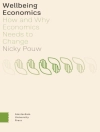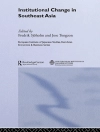Everything we use started life in the earth, as a rock or a mineral vein, a layer of an ancient seabed, or the remains of a long-extinct volcano.
Humanity’s ability to fashion nature to its own ends is by no means a new phenomenon. Silica-rich rocks have been flint-knapped by Stone Age people, transformed into stained glass in medieval times, and made into silicon chips for computers in the Digital Age. Our trick of turning rocks rich in malachite and chalcopyrite into copper has taken us from Bronze Age Minoan vases to the wiring that powers modern-day machinery.
Today, we mine, quarry, pump, cut, blast and crush the Earth’s resources at an unprecedented rate. We shift many times more rock, soil and sediment each year than the world’s rivers and glaciers, wind and rain combined. Plastics alone now weigh twice as much as all the marine and terrestrial animals around the globe. We have become a dominant, even dangerous, force on the planet.
In EXTRACTION TO EXTINCTION, David Howe traces our environmental impact through time to unearth how our obsession with endlessly producing and throwing away more and more stuff has pushed the planet to its limit. And he considers the question: what does the future look like for our depleted world?
قائمة المحتويات
Rocks and Resources; Concentrate; Bricks, Pots and Ceramics; Copper; Iron and Steel; Concrete; Glass; Aluminium; Plastics; Lithium, Rare Earths and the Information Age; Pollution and the Wounded Planet; Coal, Oil and Climate Change; The Anthropocene; References; Acknowledgements; Index
عن المؤلف
David Howe OBE is a retired academic who has studied both Earth sciences and social sciences. He has written books on psychology, relationships and social work. His passions include walking, popular science, and writing, and he is the author of two previous non-fiction books.












